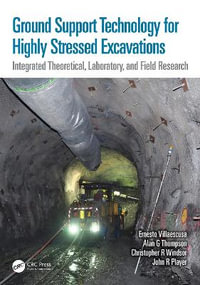| Preliminaries | |
| Motivation | p. 1 |
| The aim of the work | p. 2 |
| Acknowledgements | p. 3 |
| Review-The Change From One to Two Dimensions | |
| Introduction | p. 5 |
| Vectors-algebra | p. 5 |
| Vectors-calculus | p. 9 |
| Matrices | p. 11 |
| Statics-equilibrium | p. 13 |
| Summation convention and index notation | p. 15 |
| Beam bending | p. 15 |
| Conclusions | p. 23 |
| Statics and Kinematics of Plate Bending | |
| Introduction | p. 24 |
| The stress resultants | p. 24 |
| Principal values | p. 28 |
| The moment circle | p. 31 |
| Equilibrium equations-rectangular coordinates | p. 33 |
| Plate bending kinematics-rectangular coordinates | p. 36 |
| Equilibrium equations-polar coordinates-radial symmetry | p. 40 |
| Plate bending kinematics-polar coordinates-radial symmetry | p. 42 |
| Conclusions | p. 45 |
| Elastic Plates | |
| Introduction | p. 46 |
| Elastic theory of plate bending-moment/curvature relations | p. 46 |
| Elastic theory of plate bending-the governing equation | p. 50 |
| Circular plates-radial symmetry | p. 51 |
| Some simple solutions for circular plates | p. 53 |
| Simple solutions for problems in rectangular coordinates | p. 58 |
| Further separation of variable features-rectangular plates | p. 61 |
| Solution by finite differences | p. 64 |
| Some other aspects of plate theory | p. 74 |
| Stability of plates | p. 79 |
| Further exercises | p. 83 |
| Conclusions | p. 84 |
| Plastic Plates | |
| Introduction | p. 85 |
| Solid metal plates | p. 85 |
| Yield criteria | p. 85 |
| The bound theorems | p. 88 |
| The normality rule | p. 91 |
| Circular plates-square yield locus | p. 91 |
| Circular plates-Tresca yield locus | p. 97 |
| Plates of other shapes-square and regular shapes | p. 102 |
| Reinforced concrete slabs-upper bounds | p. 105 |
| Yield line theory-I. Fundamentals-mainly isotropic | p. 105 |
| Yield line theory-II. Further isotropic examples | p. 115 |
| Yield line theory-III. Orthotropic problems | p. 118 |
| Strip method-Hillerborg's proposals | p. 123 |
| Plates and slabs-the comparison method and lower bounds | p. 124 |
| The comparison method-general principles | p. 124 |
| The comparison method-lower bounds on the collapse load | p. 129 |
| Finding the r[subscript min]-a geometrical problem | p. 131 |
| Affinity Theorem-orthotropic plates-associated isotropic equivalents | p. 136 |
| Other edge conditions | p. 138 |
| Conclusions | p. 139 |
| Optimal Plates | |
| Introduction | p. 140 |
| Problem formulation | p. 140 |
| Constant curvature surfaces and principal directions | p. 142 |
| Basic results-corners | p. 144 |
| Some complete results | p. 151 |
| Moment volumes | p. 153 |
| Some theory | p. 155 |
| Conclusions | p. 159 |
| Exercises | p. 160 |
| Construction and Design-A Case for New Technology | |
| Introduction | p. 161 |
| A case for new technology in construction | p. 164 |
| Some "ideals" to be aimed for in construction | p. 167 |
| Externally reinforced concrete-the preferred system of reinforcement and construction | p. 172 |
| Section design for externally reinforced concrete members | p. 179 |
| Conclusions | p. 186 |
| Exercises | p. 187 |
| Bibliography and Concluding Exercises | |
| Bibliography | p. 188 |
| Notes on the development of structural mechanics | p. 192 |
| Further Exercises | p. 202 |
| Concluding remarks | p. 208 |
| Geometry of Surfaces | |
| The need for geometry | p. 209 |
| Geometry of a plane curve-curvature | p. 209 |
| Length measurement on a surface-first fundamental form | p. 212 |
| The normal to a surface | p. 215 |
| Normal curvature-second fundamental form | p. 217 |
| The derivatives of n-the Weingarten equations | p. 219 |
| Directions on a surface | p. 220 |
| The principal curvatures | p. 221 |
| Principal directions | p. 222 |
| Curvature and twist along the coordinate lines | p. 224 |
| The curvature matrix | p. 228 |
| The curvature circle | p. 230 |
| Continuity requirements | p. 236 |
| Special surfaces | p. 239 |
| Summary-the geometrical quantities required for the construction of a plate theory | p. 243 |
| Index | p. 245 |
| Table of Contents provided by Ingram. All Rights Reserved. |
























